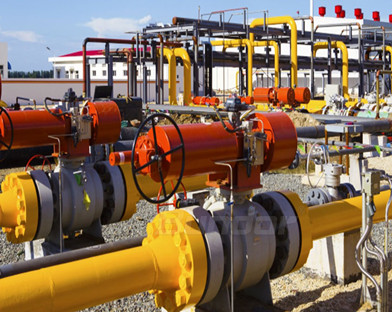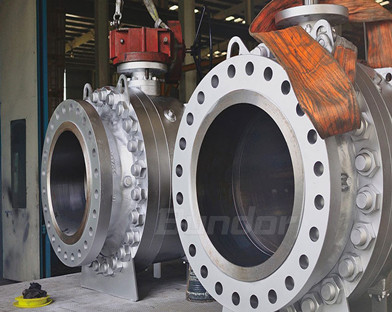Where is the ball valve used
Posted by Bundor valve
Usually rubber, nylon and polytetrafluoroethylene are used as the material of the valve seat sealing ring, so its use temperature is limited by the material of the valve seat sealing ring. The cut-off function of the ball valve is accomplished by pressing the metal ball against the plastic valve seat under the action of the medium (floating ball valve). Under the action of a certain contact pressure, the valve seat sealing ring undergoes elastic-plastic deformation in local areas. This deformation can compensate the manufacturing accuracy and surface roughness of the ball, and ensure the sealing performance of the ball valve.

And because the valve seat sealing ring of the ball valve is usually made of plastic, when choosing the structure and performance of the ball valve, the fire resistance and fire resistance of the ball valve should be considered, especially in the petroleum, chemical, metallurgical and other departments, in flammable and explosive media. If ball valves are used in the equipment and pipeline systems, more attention should be paid to fire resistance and fire protection.
Usually, in two-position adjustment, strict sealing performance, mud, wear, shrinking channel, quick opening and closing (1/4 turn opening and closing), high pressure cut-off (large pressure difference), low noise, cavitation and gasification, Ball valves are recommended for pipeline systems with small amount of leakage to the atmosphere, small operating torque and small fluid resistance.

The ball valve is also suitable for the pipeline system of light structure, low pressure cut-off (small pressure difference) and corrosive medium.
Ball valves can also be used in cryogenic (cryogenic) installations and piping systems.
In the oxygen pipeline system in the metallurgical industry, ball valves that have undergone strict degreasing treatment are required.
When the main line in the oil pipeline and the gas pipeline needs to be buried underground, a full-bore welded ball valve should be used.
When regulating performance is required, a ball valve with a special structure with a V-shaped opening is required.
In petroleum, petrochemical, chemical, electric power, and urban construction, metal-to-metal sealing ball valves can be selected for pipeline systems with a working temperature above 200 °C.

And because the valve seat sealing ring of the ball valve is usually made of plastic, when choosing the structure and performance of the ball valve, the fire resistance and fire resistance of the ball valve should be considered, especially in the petroleum, chemical, metallurgical and other departments, in flammable and explosive media. If ball valves are used in the equipment and pipeline systems, more attention should be paid to fire resistance and fire protection.
Usually, in two-position adjustment, strict sealing performance, mud, wear, shrinking channel, quick opening and closing (1/4 turn opening and closing), high pressure cut-off (large pressure difference), low noise, cavitation and gasification, Ball valves are recommended for pipeline systems with small amount of leakage to the atmosphere, small operating torque and small fluid resistance.

The ball valve is also suitable for the pipeline system of light structure, low pressure cut-off (small pressure difference) and corrosive medium.
Ball valves can also be used in cryogenic (cryogenic) installations and piping systems.
In the oxygen pipeline system in the metallurgical industry, ball valves that have undergone strict degreasing treatment are required.
When the main line in the oil pipeline and the gas pipeline needs to be buried underground, a full-bore welded ball valve should be used.
When regulating performance is required, a ball valve with a special structure with a V-shaped opening is required.
In petroleum, petrochemical, chemical, electric power, and urban construction, metal-to-metal sealing ball valves can be selected for pipeline systems with a working temperature above 200 °C.
 简体中文
简体中文 Русский
Русский Español
Español Bundor - Butterfly, Gate, Check, Ball, Globe Valve Manufacturer, Supplier & Distributor
Bundor - Butterfly, Gate, Check, Ball, Globe Valve Manufacturer, Supplier & Distributor
